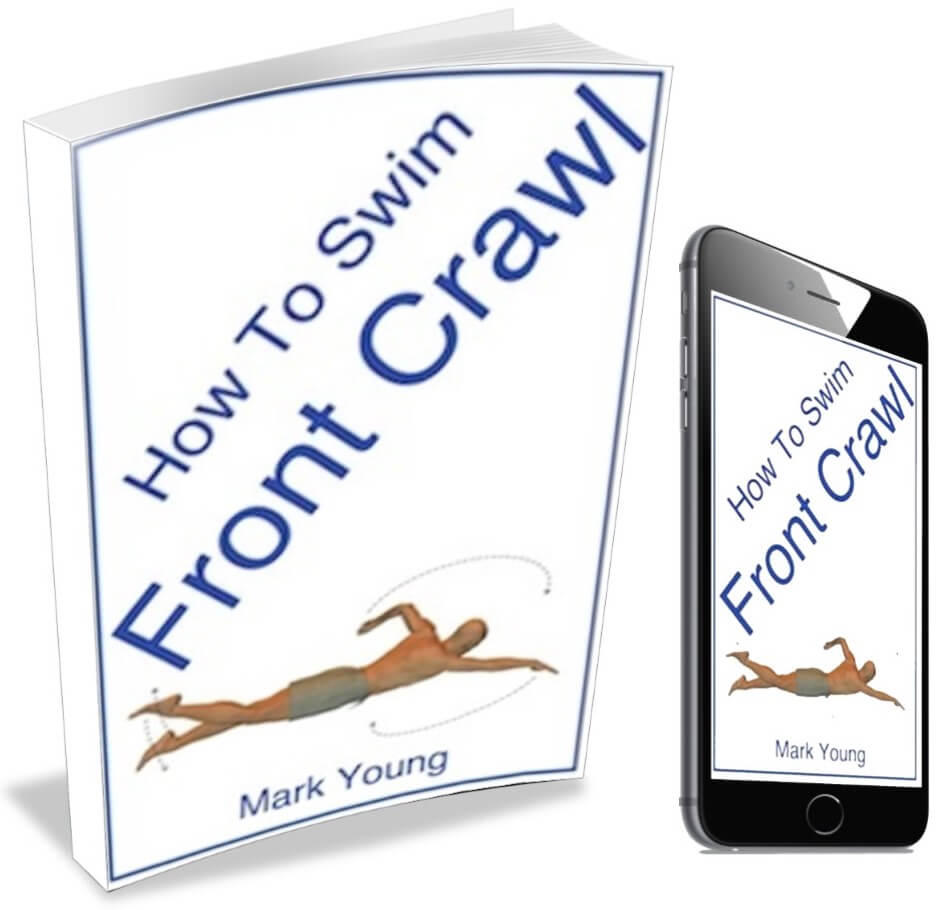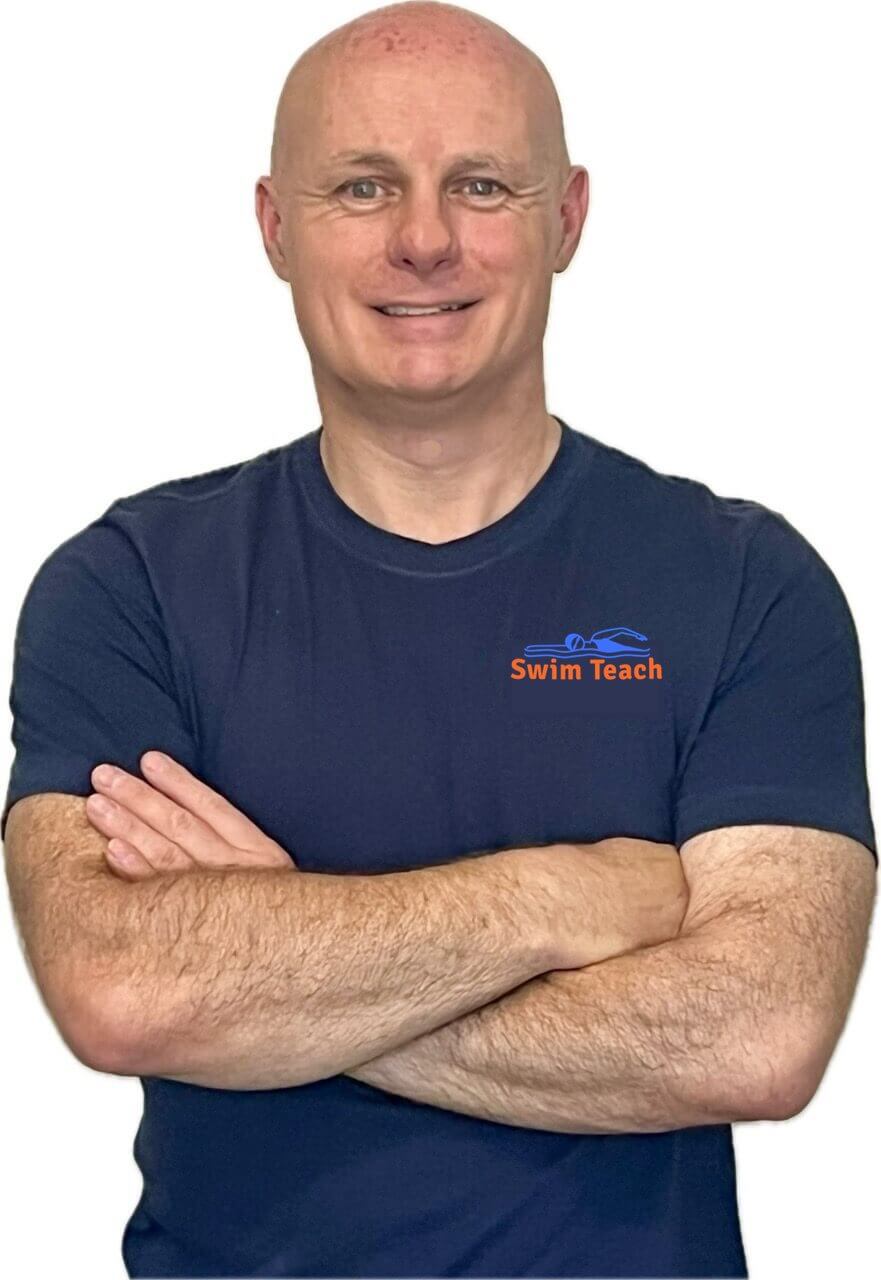- Swim Teach Home
- front crawl
- Front Crawl Breathing
- Freestyle Technique
Correct Arm Movements for Freestyle Swimming
Why am I sinking when I start rotating my arms? I think I do not have the correct arm movement for freestyle swimming.
There are a few reasons why you might start to sink as you begin your arm action during freestyle swimming.
The cause could be a lack of propulsion, body position or a combination of both. It could also be that you are not relaxed enough, and your body is too rigid, making your swimming stroke tense.
The freestyle swimming technique gets most of its propulsion from the arm action. The legs kick mainly to provide balance and support, especially over a long distance. If you fail to pull hard enough to generate enough propulsion, the result will be that sinking feeling.
Body position is crucial to maintaining a streamlined movement through the water. Freestyle body position must be a flat position at the water's surface. This flat position is only achieved when the face is submerged – only the face and not the entire head.
The most common mistake is to raise the head to face forwards when breathing or have to face permanently out of the water from the start. Any movement upwards of the head will cause the legs to sink. The breathing technique for freestyle should be rolling the head to the side.
Combining the correct body position (including the head position when breathing) with enough propulsion from the arm action will result in a smooth freestyle swimming technique.
My eBook How To Swim Front Crawl contains over 20 separate exercises covering all aspects of the swimming stroke, including body position, arm action and breathing. You can download it instantly, print out the exercises you need and take them to your pool to try out. The exercises are obvious, easy to follow, and will help your freestyle swimming technique. Click the link below for more information.
Freestyle Breathing Technique with Limited Neck Movement
I need some help with freestyle breathing technique with limited neck movement. I have an adult pupil who has limited neck movement, any ideas on how to get him to breathe efficiently when doing freestyle?
Thanks for your question.
If your adult pupil has a physical problem with their neck that prevents them from moving through a standard range of movement, then there may be little that can be done to achieve an efficient breathing technique. He may have to sacrifice stroke efficiency for a more prominent shoulder roll to turn his head and take a breath.
However, ensure that the timing of the breath is correct. In other words, make sure his arm is entirely through its propulsive phase and out of the way of the face as he breathes. If the breath is early or late, the arm and shoulder will limit neck movement.
Also, ensure your pupil is not attempting to turn his head too far in an attempt to breathe. The head needs to be turned just enough for the mouth to be clear of the water surface to inhale.
Ensure he is trickle breathing (exhaling underwater) so that when he turns his head to breathe, he only has to inhale, unlike explosive breathing, which takes longer and is more tiring (holding his breath while swimming and then breathing out and then in the short time his head is turned).
Depending on your pupil's needs, breaststroke is always easier from a breathing perspective, and it also requires no turning of the head and neck. If he is a beginner, then maybe consider this. If it is his wish to pursue freestyle, the above will hopefully help.
HOW TO SWIM FRONT CRAWL EBOOK: everything you need to master front crawl swimming stroke. 22 easy drills that focus on each part of front crawl technique. From body position to breathing and timing. Decades of teaching experience all packaged into 1 easy file. Download to your device and master front crawl TODAY! (click here for an instant preview).
Don't miss out! Click here for more details on how to get your copy.
Freestyle Swim Stroke
Frustrated with your freestyle swim stroke technique? Maybe swimming freestyle is something you always wanted to be able to perform but never really tried. Or maybe you can do freestyle stroke, but you get out of breath quickly. Let me guess; you tried it out and nearly died after one length of the pool?
Becoming out of breath swimming front crawl and getting the coordination of front crawl technique are the two most common issues dealt with by swimming teachers during swimming lessons.
Freestyle swim stroke is the fastest of all four basic swimming strokes. This is due to its streamlined body position and continuous alternating arm pulls and leg kick. The streamlined body position enables it to move efficiently through the water, and arm action gives it power and propulsion. The leg kick gives some additional propulsion and balances the swimming stroke nicely.
Freestyle is also the most physical swimming stroke (except butterfly stroke, which is rarely swum recreationally), so a huge demand is placed on the cardiovascular system and therefore tests our aerobic capacity.
This is especially true if your regular swimming stroke is breaststroke. Recreational breaststrokers swim with an angled body position and head mostly out of the water. Swimming freestyle requires the face to be submerged; therefore, a more demanding breathing technique is required.
What are the most common mistakes made with freestyle swimming technique?
The top 5 freestyle swimming mistakes are:
- Breath holding instead of exhaling into the water
- Trying to swim too fast and wasting energy
- Lifting the head to breathe instead of rolling it to the side
- A wide body position causing frontal resistance and poor efficiency
- Excessive and unnecessary leg kick speed resulting in poor timing and coordination
Basic Freestyle Swimming Technique Made Easy
 How To Swim Front Crawl
How To Swim Front Crawl$9.99

I am a member of the Amazon Associates Program and I will earn a commission from qualifying purchases at no extra cost to you.





